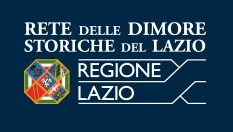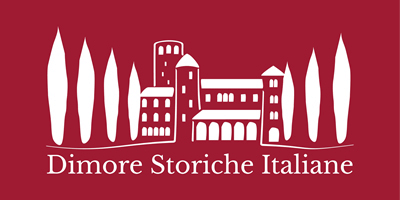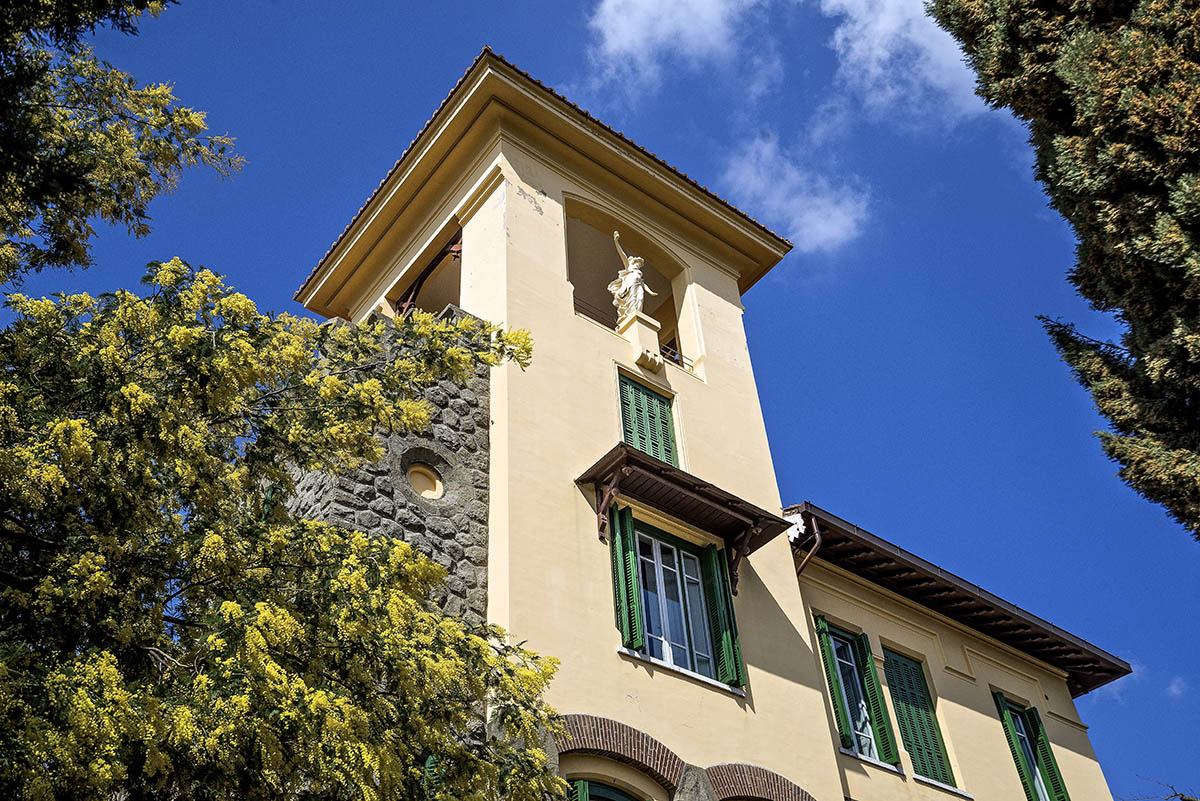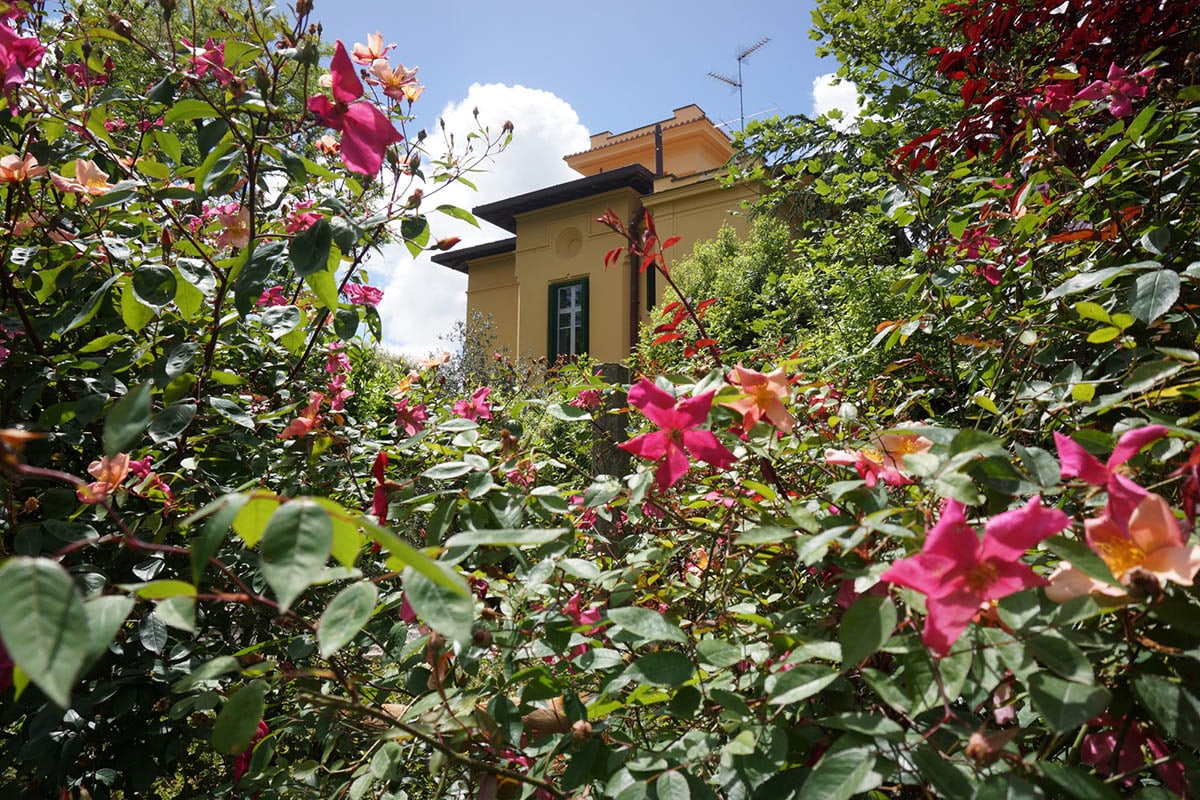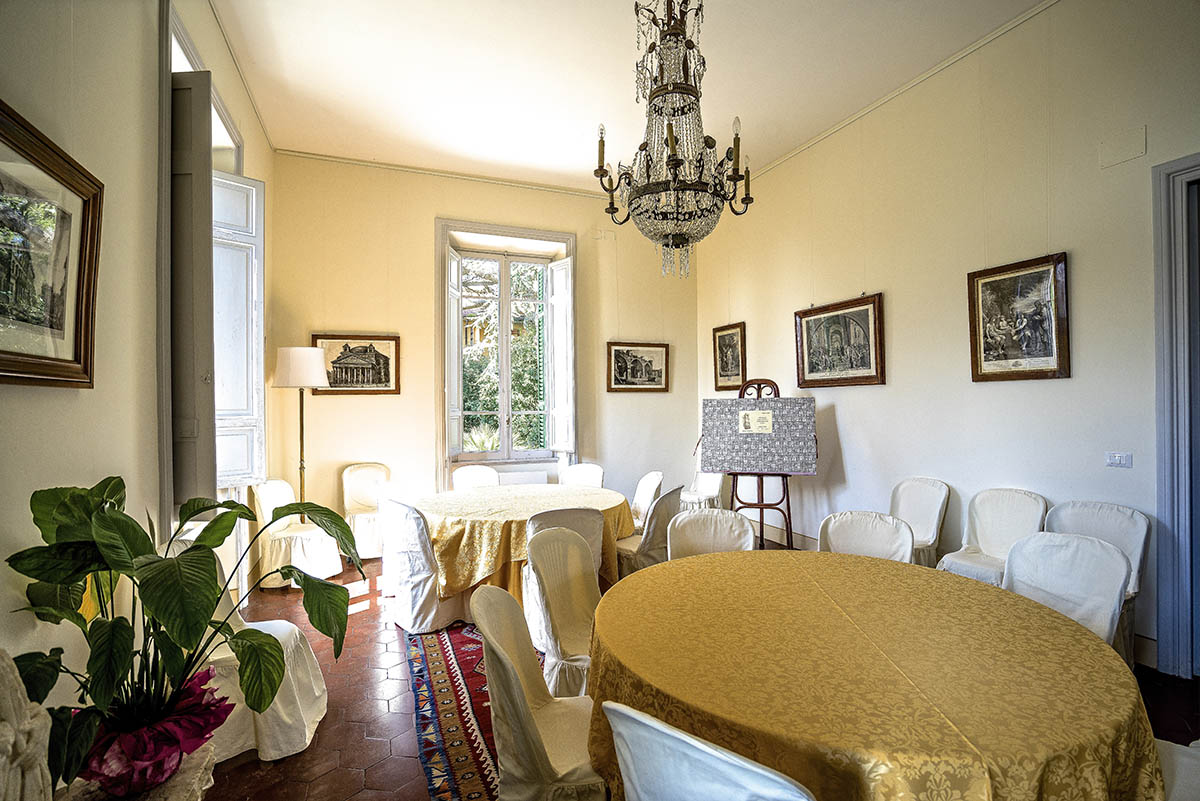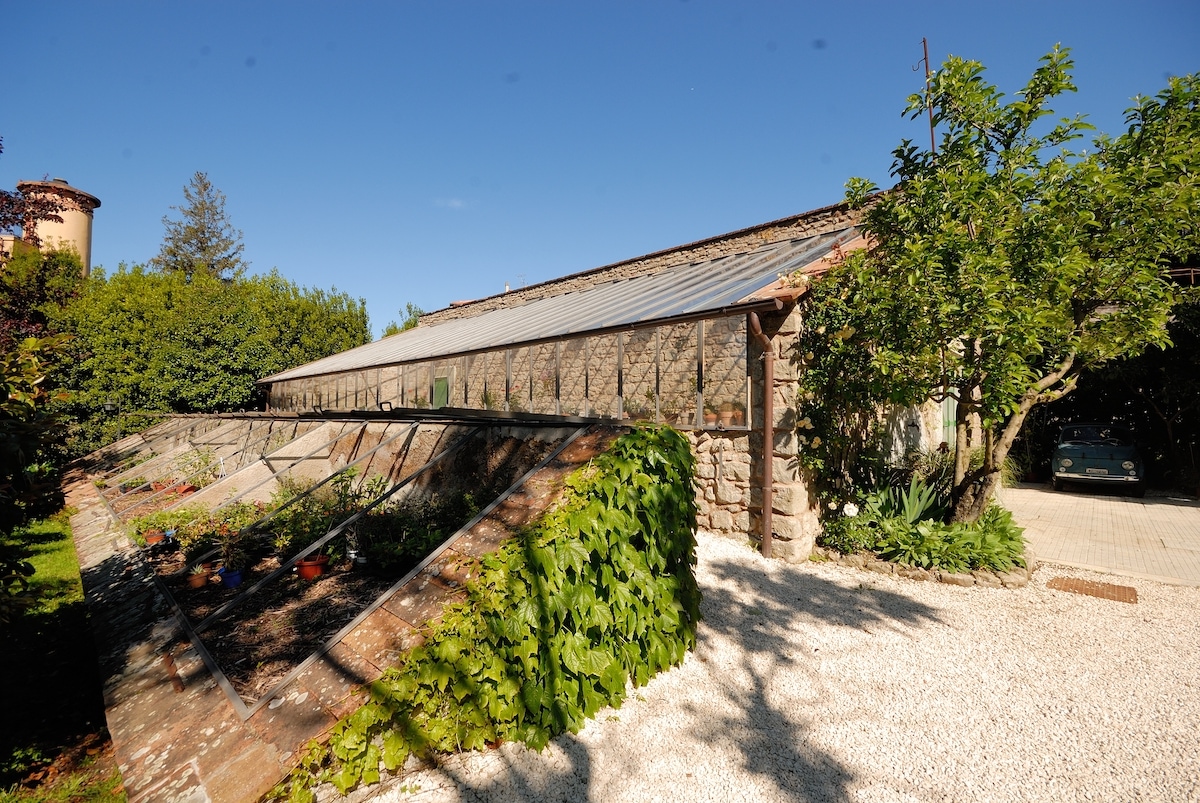Guided Tours to the garden
The garden can be visited every
every first friday of the month.
from 10 to 15
in autumn and winter,
from 10 to 18
in spring and summer.
Mini Grand Tour
Ariccia and its lakes:
nature, culture
on the trail of the Grand Tour
The e-book
The Grand Tour in the Alban Hills
is available
Upcoming events
- Attualmente non c'é nessun evento in programma.
WELCOME THE VILLINO VOLTERRA
Villino Volterra is located in the Castelli Romani area, 24 kilometers from the center of Rome, at one end of the monumental bridge that connects Albano Laziale to the square of Ariccia. Built in the early 1900s it maintains the charm of those times.
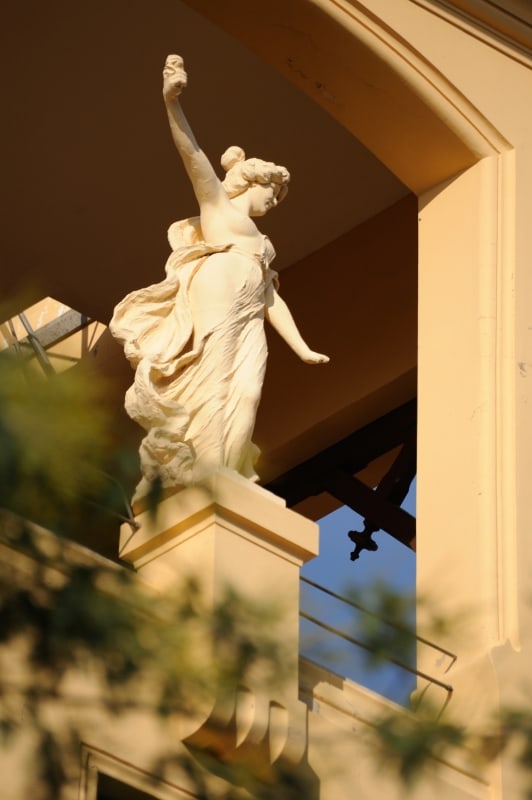
History
The buildings and gardens were designed and built between 1904 and 1907 by the architect Architetto Giulio Magni for the renowned mathematician Vito Volterra.
The garden
The estate is nestled in the beautiful setting of a luscious garden, filled with ancient trees. It is wonderfully harmonious, lively and full of surprises.
The ‘Giardino Villino Volterra’ app
For a virtual tour of the garden you can access the ‘Giardino Villino Volterra’ app, available for iPad, iPhone and Android devices.
The villa
built in the early 1900s it still has the charm of that period
The garden
The estate is nestled in the beautiful setting of a luscious garden, filled with ancient trees.
Interiors
The main house has three floors connected by a large staircase with an elevator up to the characteristic tower.
The Greenhouse
A bright space within the garden available for different types of activities or meetings.
TO KNOW MORE
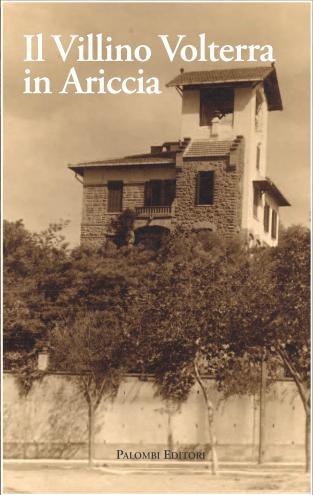
The Villino Volterra in Ariccia
This volume traces the history of “Villino Volterra” over more than a century. Its construction, commissioned by the mathematician Vito Volterra and Virginia Almagià, began in 1904 under the direction of the architect Giulio Magni, and its present restoration.
The legacy of Vito Volterra
A documentary of the life of Volterra, who was also a key figure in Italian culture and politics, and the founder of important scientific organizations, such as the Italian National Research Council (CNR), the Italian Physics Society and
the International Council for Research.


